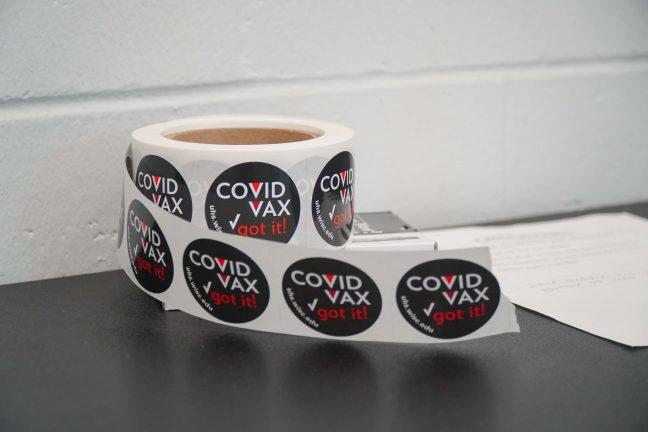Wisconsin has seen a number of COVID-19 breakthrough cases among residents who have already been vaccinated in the past few weeks.
A breakthrough case can be defined as a U.S. resident who has contracted SARS-CoV-2 at least 14 days after being fully vaccinated, according to a Health Advisory from the South Carolina Department of Health and Environmental Control.
According to the Wisconsin State Journal, new data has been released showing 0.03% of fully vaccinated Wisconsin residents have contracted COVID-19 after getting the vaccine. In other words, there have been 605 reported COVID-19 cases among the 1.8 million residents who have been fully vaccinated.
The Centers for Disease Control and Prevention and experts claim these numbers show up because no vaccine is 100% effective. Wisconsin Department of Health Services Spokesperson Jennifer Miller said it is still encouraged to get vaccinated with any of the three vaccines, as the breakthrough percentage is minimal, according to the Wisconsin State Journal.
The Wisconsin State Journal said they struggled to initially obtain data on breakthrough cases as Miller continuously delayed releasing the information. Miller said the WDHS is “committed to transparency” and is “always evaluating and looking for ways to present important information for Wisconsinites,” according to the article.
In an email statement to The Badger Herald, University of Wisconsin Health pediatrician and vaccine expert Dr. James Conway said the vaccine breakthrough percentage of 0.03% proves the vaccines’ effectiveness.
“This shows the vaccines are actually even more protective than the original estimates,” Conway said. “Remember ‘way back’ when the data on these vaccines was first presented that showed 95% protection against severe disease and less than 90% protection overall? So this data actually shows that the vaccines are 99.7% protective.”
As more vaccines are readily available, vaccination rates in rural areas of the state have been lower than vaccination rates in urban areas in the past few weeks, according to the Wisconsin State Journal.
In an email statement to The Badger Herald, Rural Wisconsin Healthcare Cooperative Executive Director Tim Size explained why this may be the case.
“We now have more supply of the vaccine than demand for it,” Size said. “I believe that is happening more rapidly in rural Wisconsin as a larger proportion of the population is not yet ready, or hesitant, to get vaccinated, so we are beginning to see a gap in the vaccination rate between rural and urban communities.”
Vaccines are currently only available to adults 16 and older in Wisconsin, which slows vaccinating the entire state, as children under 16 make up 20% of Wisconsin’s population.
Conway said children are projected to be eligible for the vaccine soon.
“We expect that adolescents ages 12-15 should be able to start getting vaccines in early summer,” Conway said. “Studies are ongoing in children 6 months to 11 years of age, but will likely take more time. I am hopeful that we will be able to immunize children in late 2021 or early 2022.”
Health officials say people should continue to take safety precautions regarding the coronavirus even if fully vaccinated, despite the effectiveness of the vaccines.
In an email statement to The Badger Herald, Miller emphasized the importance of recognizing that the pandemic is still not over.
“COVID-19 is still active in Wisconsin, and across the United States, so it is still very important for people to continue to follow the safety guidelines to stop the spread of the virus,” Miller said. “That includes wearing a mask, avoiding large gatherings, maintaining a safe distance between themselves and others and washing their hands frequently and thoroughly.”


